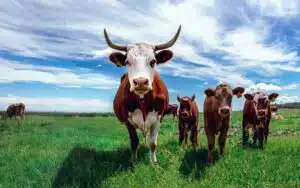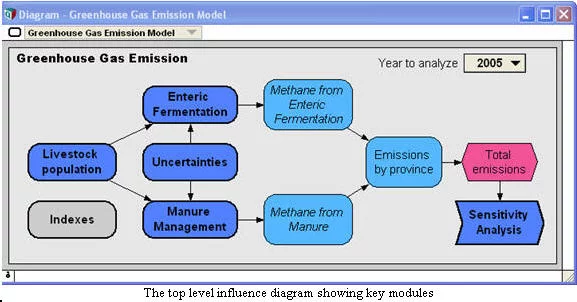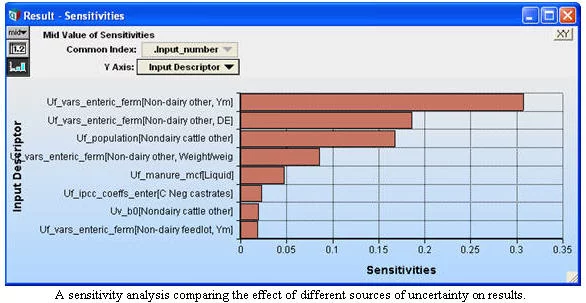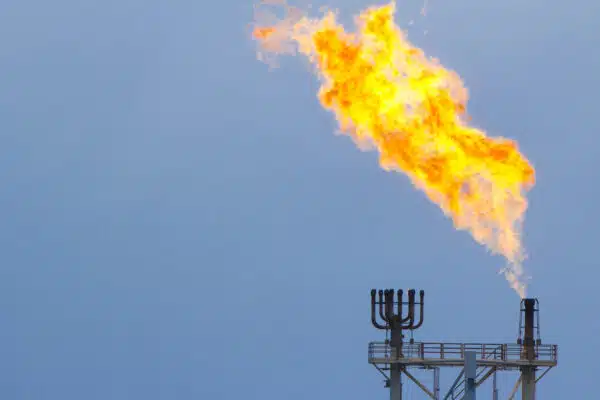
The digestive systems of ruminants and their manure both generate methane, CH4. The volume of methane they produce is much smaller than the volume of carbon dioxide from fossil fuels, but methane – molecule for molecule — has over twenty times the global warming potential of carbon dioxide. Hence, according to the United Nations Food and Agriculture Organization (FAO) livestock generate 18 percent of total greenhouse gas emissions as measured in CO2 equivalents — more than the entire transport sector, automobiles, trains, ships, and planes.
The challenge
The Kyoto Protocol requires signatory nations to inventory their annual emissions of greenhouse gases so they can track changes over time.
The IPCC (Intergovernmental Panel on Climate Change) defines methods to do this, including how to estimate greenhouse gas emissions from livestock.
In Canada, the Ministry of Agriculture and Agri-Food has the job of making these annual assessments. They had collected data on animal populations and created a spreadsheet to make this assessment.
However, the spreadsheet had become dauntingly complex and hard to understand. They also needed a way to estimate the uncertainties in the estimates, using probabilistic methods suggested by the IPCC.
Why Analytica?
Dr. Julian Hutchinson, Research Associate at Canada’s Ministry of Agriculture chose Analytica because “I liked the influence diagrams. They are very intuitive, and show the linkages.
“I was very impressed about how much easier they are to understand and explain than a spreadsheet. That was the big deciding factor for us.”

The solution
Canada’s Ministry of Agriculture and Agri-Food asked Lumina to translate its spreadsheet for deterministic assessment of methane emissions from livestock into Analytica. The model considers 28 types of animal, including dairy and beef cattle, pigs, sheep, horses, poultry, and bison, over 10 provinces. It uses the IPCC Tier 2 method for cattle and the simpler Tier 1 method for other livestock.
The original Excel spreadsheet file size was 1.60 Megabytes. Rewriting the Excel model into Analytica took 3 person-days. The equivalent Analytica model was 48 Kilobytes, including input data and the added influence diagrams. This reduction by a factor of 34 in file size is a measure of the relative simplicity of the Analytica representation.
The Analytica model extends the spreadsheet to deal with uncertainty on key parameters, and from a single year to a multiyear analysis. It includes live links (using Microsoft OLE) to key inputs in a corresponding spreadsheet – letting users to enter large input tables in a familiar spreadsheet template. Analytica reads these numbers and performs the uncertainty and sensitivity analysis.
The Ministry estimated the relative uncertainty for each input number – that is, half the 95% confidence interval as a percent of its median. Lumina incorporated these into the model, extending it to use Monte Carlo and a complete uncertainty analysis, following the methods specified by the IPCC and the Ministry.
According to Dr. Hutchinson “The process of importing the model into Analytica forced us to obtain a clearer understanding of the model. The result is very much clearer and easier to track. It has helped us do sensitivity analysis to identify the most influential input uncertainties. It helped advance our knowledge and improve our confidence in the treatment of the uncertainty.”
There are several ways to reduce methane emissions from livestock: Biogas digesters can collect the methane from animal manure making it available as a renewable fuel. Burning the methane to generate carbon dioxide reduces its greenhouse potential by 95%. Variations and additives to livestock feed can substantially reduce methane from enteric fermentation in their digestive systems.
A publication summarizing the results from the model is in preparation.

Authors
Dr. Julia Hutchinson, Research Associate with Agriculture and Agri-Foods Canada, with assistance from our team here at Lumina Decision Systems.




